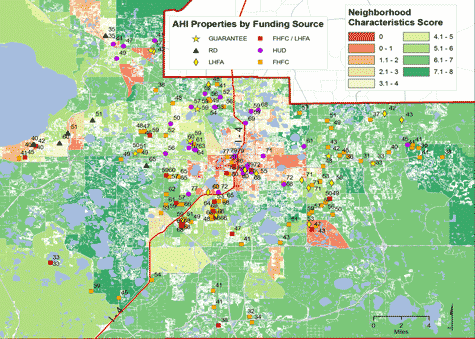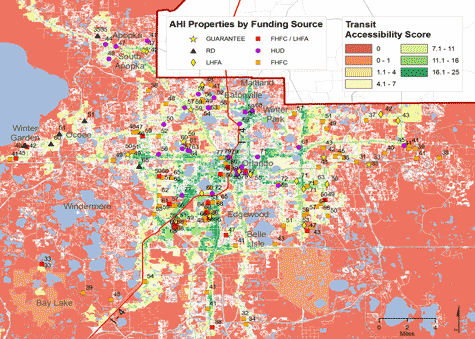Housing Suitability Model


The Housing Suitability Model (HSM) is a GIS-based tool for identifying locations suitable for affordable housing development and preservation. Thoughtful siting of affordable housing requires more than just a consideration of land costs. Is a proposed site close to transit? Can residents commute to job centers easily? Are good quality schools located nearby? Will an affordable housing development add to the economic diversity of the neighborhood?
The HSM uses a variety of spatial data layers to evaluate sites in terms of their suitability for affordable housing. It shows the places where affordable housing objectives reinforce each other It also shows how objectives can come into conflict, such as in a neighborhood with high-quality schools and low crime risk but little access to transit. The model was originally developed by the Shimberg Center, Department of Urban and Regional Planning and GeoPlan Center, with major support from Wells Fargo.
Shimberg researchers have used the HSM to help planning councils in Florida's Heartland and Orlando regions to plan for future affordable housing needs, as part of two HUD Sustainable Communities Regional Planning Grant initiatives; to evaluate transit and walking access to services and jobs for tenants with Housing Choice Vouchers in 16 Florida counties; and to inform Orange County's Regional Affordable Housing Initiative.
Key findings
Central city sites score highly in terms of transit accessibility and low driving costs, but lag in neighborhood socioeconomic characteristics (high educational attainment and incomes for surrounding households, low crime risk, low poverty levels).
These differences show up in the assisted housing stock. HUD-subsidized developments from the 1960s and 1970s tend to have central city locations that score well in terms of transit accessibility and proximity to services, but less well in terms of socioeconomic characteristics.
Apartments developed more recently under the Low Income Housing Tax Credit and local and state bond financing programs score more highly on socioeconomic characteristics, but less well in terms of transportation and accessibility.
For voucher holders, locations in market-rate multifamily developments provide the best transit and walking access to services, amenities, and jobs, while single-family locations provide the least access. Recent Florida Housing-sponsored developments also offer a higher degree of transit access and walkability for voucher holders.



